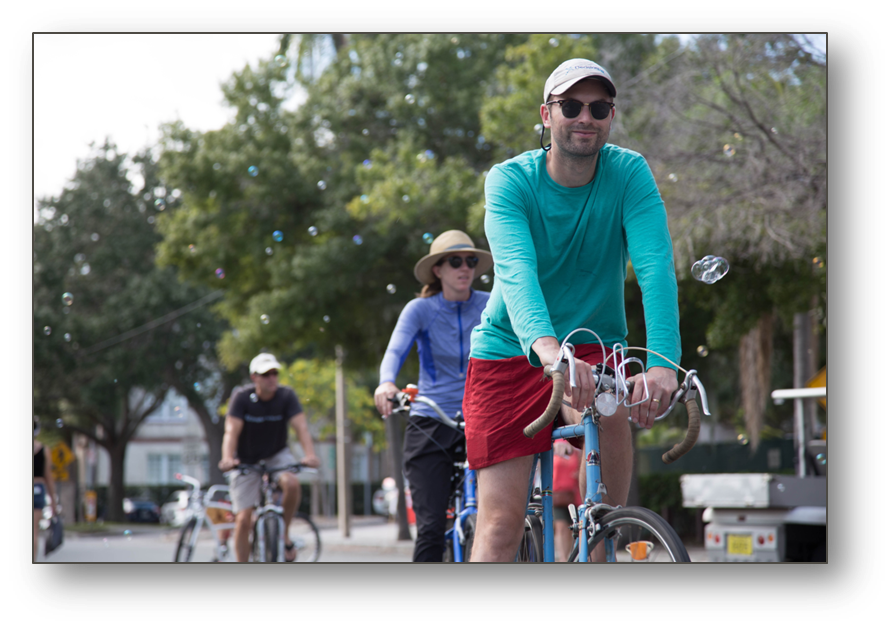AARP Hearing Center
Update: Nov. 3
It’s clear that older adults have had a huge impact on St. Petersburg. Over the past decade, they’ve had a say on the transformation of St. Pete being rebranded from “Heaven’s Waiting Room” to being a great place to live.
Today, St. Petersburg is leading another transformation to accommodate the upcoming generations who will prosper through healthier lives while expecting to do more where they live.
“Study after study shows that older adults want to stay in their current community as long as possible,” said Laura Cantwell, Age Friendly Lead for AARP Tampa Bay. “We see that a city’s needs are best served by good design and community support.”
Taking its cue from the changing signs of the time, local citizens, civic organizations, and government agencies are working together to make the city more livable.
From group fitness events to street fests to local trolleys, St. Petersburg is host to an increasing number of city redesigns that take all generations into consideration. While some groups get together for fun, others such as the City of St. Petersburg are formally orchestrating strategies to make the community better for people at both ends of the age scale.
“An example of what the city strives for under the Department of Parks and Recreation is inclusivity for individuals of all ages,” said Jason Martino, Area Agency on Aging (AAA) of Pasco-Pinellas and representative for the City of St. Petersburg’s Commission on Aging’s work for AARP’s Age Friendly initiative. “Social integration for all ages is an important piece of child development and de-isolation for older adults.”
In June 2016, representatives from a collection of agencies including AAA of Pasco-Pinellas and St. Petersburg College put their hat in the ring to become officially recognized as part of AARP’s Age Friendly Network. The network is an initiative led globally by the World Health Organization and by AARP in the U.S. Its goal is to transform cities into places where every generation thrives together economically and socially.
“The city relies heavily on commerce and especially tourism commerce. Enhancing access for locals only achieves increased ease for those that visit and play here,” Martino said.
Drawing on one of the livability indexes of accessibility is the recent inaugural Open Streets collaboration between two citizen groups of ShiftStPete, the St. Pete Bike Co-Op and several other community sponsors.

The event closed the streets to vehicles so people could comfortably explore their community and experience livability principles in action. In the same neighborhood, musicians and food trucks shared open spaces for the Keep St. Petersburg Local fall Indie FamFest.
“Complete Streets policies get people thinking about how we use our streets for all types of transportation, not just automobiles,” said Jeremiah Rohr, ShiftStPete volunteer and organizer of the recent open streets event. “So bicycles, skate boarders, pedestrians; everyone has to share.”
According to Rohr, Open Streets type events happen on a regular basis – weekly or monthly - in communities throughout the world and he’d like the same for St. Petersburg.
Designed for fun, collaborations such as these also educate and inform.
“The age-friendly initiative promotes bringing people and organizations together through local events such as Open Streets,” said Cantwell. “And, for St. Petersburg residents, it’s a chance to raise their voice for a better quality of life.”
St. Petersburg’s recent membership into the age-friendly network community is a local opportunity with international potential. By pursuing the livability indexes that make sense for the community, it gives the city a mission to engage the public with their government and the policies that affect them. It also has the potential to elevate its rank as a top tourist destination.
“The city is now in a position to reflect and work with the building blocks that might be small, but can be monumental in what’s created,” said Martino. “It’s a win-win situation in my opinion.”
- - - - - - - - - - - - - - - - - -
Sept. 2016

With nearly a third of its residents 55 and older, St. Petersburg is working to better address the needs of its aging population.
It is the sixth community to enter the Age-Friendly Community Network.
It promotes livability in eight areas: outdoor spaces and buildings, transportation, housing, social participation, respect and social inclusion, civic participation and employment, communication and information, and community support and health services.
St. Petersburg officials hope to integrate it with ongoing efforts such as Healthy St. Pete, an initiative to improve health throughout the community, and Complete Streets, which aims to create a safe transportation network for all users, not just motor vehicles.
“This really benefits everyone in the community,” said Laura Cantwell, AARP associate state director for advocacy.
The city will consult with experts and Florida’s six other member communities, said Sherry McBee, St. Petersburg’s administrator of leisure services. But more important, she said, is talking to residents: “Asking questions rather than assuming you know what people’s needs and wants are.”
AARP also plans to gather residents’ input through events such as town hall meetings throughout the city.































































